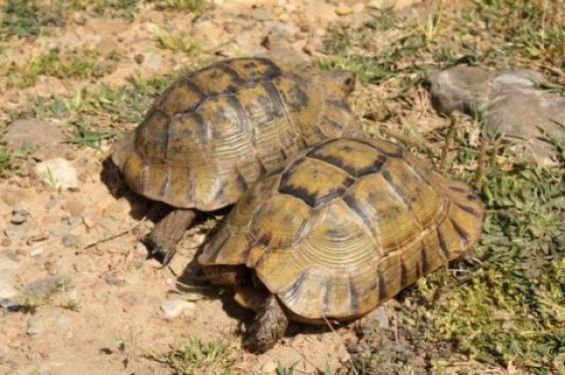Although the species was declared endangered and protected by a ministerial decree on November 19, 2007, Moorish tortoises still face several dangers in Morocco.
In a doctoral thesis entitled «Drivers and threats of Mediterranean spur-thighed tortoise population dynamics in the core of the distribution range», Amalia Segura González, from the University of Castilla-La Mancha, conducted research on the subject. She studied the situation of these small reptiles in the Maâmora forest, near Rabat, examining their possible demographic differences with regards to size and population structure, fecundity and juvenile survival compared to other tortoise populations.
Several factors threatening a protected species
The study found that, although its population trends have not been quantified precisely, all experts agree that populations of the species have «declined considerably in almost all areas since 1970». The expert recalls that Testudo graeca, also known as the Greek tortoise, has been declared a vulnerable species and was listed in the International Union for Conservation of Nature Red List of Threatened Species. Since 1975, it has also been listed in Appendix II, which includes species not necessarily threatened with extinction, but whose trade must be controlled in order to avoid utilization incompatible with their survival.

In Morocco in particular, the loss of suitable habitats of the Moorish tortoise has been «progressive since 1969 due to the decline of the argan tree and the cork oak tree in forests, mainly due to overgrazing», underlines Amalia Segura González. The tortoise specialist declared that the clearing of land to develop it for farming has increased over time, reducing nesting sites and making the reptiles more visible to predators.
«Predation by the common raven has been identified as being responsible for a significant decrease in tortoise populations», she warned.
Domestication of Moorish tortoises, a major threat to their survival
Apart from trade and diseases that affect the species, such as «macroparasites in general, and ectoparasites in particular, the thesis sheds light on another phenomenon; which is that of domestication», which is «the main threat to the conservation» of the species. For Amalia Segura González, this practice «modulates the size and structure of the species population and, consequently, their demography».
«The Maâmora forest being one of the most suitable habitats for this species, its proximity to Rabat indicates the possibility that these tortoise populations are particularly sensitive to excessive collection».
The results of the research carried out have shown «significant differences in the size and structure of the population between protected and unprotected areas». The study thus evokes «more density balanced populations, predominant young adults» and «higher body condition in protected areas, particularly when it comes to females», in protected areas. On the other hand, the study notes a «low density», a «more unbalanced population and a predominance of older females and younger males» in unprotected areas.
A survey carried out by the researcher, interviewing locals, showed that most of them own tortoises (61%), mainly juveniles (65%).
«The Maâmora forest is home to one of the densest populations of Mediterranean tortoises documented to date, and its conservation is essential if this species is to be maintained», argues the researcher. She concludes that «one of the challenges remains to change the social perception of the Moorish turtle as a companion animal and to highlight its intrinsic ecological value».




 chargement...
chargement...











